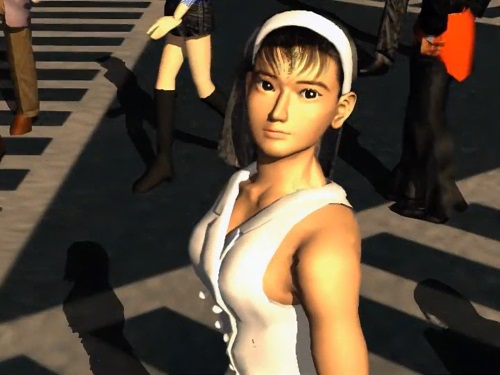The early days of Tekken with Masanori Yamada
 Wonkey ON
Wonkey ON  Sunday, December 8, 2019 at 12:05AM
Sunday, December 8, 2019 at 12:05AM 
While it was no secret that the early years of Tekken development were a turbulent storm, no one could predict the impact that came with the rise of the very first PlayStation. Masanori Yamada was the main programmer for Tekken 1 through to Tekken 3 and found himself on the forefront of emerging new technology. Talking with Polygon, Yamada-san reminisces on his older and more hectic days of developing Tekken games while under corporate deadlines and the advancement of 3D graphics. "We were all told not to go home without authorization, even on weekends,” he explains during a dinner session with former Sony developers and businessmen. Yamada goes on to conclude that he misses the early days when it came to video game development considering the level of challenge and innovation needed at the time and compares them to the level today where he voices concerns that the games themselves aren't changing much. There's a broad range of topics covered in this conversation with Archipel/Polygon so you can find some snippets posted down below but check out the full documentary style interview for the bulk of the history behind gaming development during the times:
[Polygon] The early days of Tekken ≫ https://www.polygon.com/features/2019/12/2/20992483/staying-up-all-night-and-riding-in-a-car-trunk-the-early-days-of-tekken
▌Masanori Yamada on early Tekken development
 ̄  ̄  ̄  ̄  ̄  ̄  ̄  ̄  ̄  ̄  ̄  ̄  ̄  ̄  ̄  ̄  ̄  ̄  ̄  ̄  ̄  ̄  ̄
Yamada started at Namco in 1988, and worked on a series of arcade games prior to Tekken. Those included a vertical shoot-’em-up called Dangerous Seed and a four-player fighting game called Knuckle Heads, as well as various canceled projects.
One of Yamada’s earliest memories working on the hardware was taking a sample 3D model that an artist at Namco had made as a test — a version of Cammy from the Street Fighter series — and getting it to work on PlayStation. When the textures and level of detail held up, he knew the hardware was something special.
As he spent time with the hardware, Yamada says he made it a point to outperform his competitors — including early PlayStation fighter Battle Arena Toshinden and Namco’s own Ridge Racer, which was under development on the same floor next to Tekken.
As part of being at the forefront of the technology, Yamada says Namco had short deadlines for its games. He estimates that the arcade version of Tekken took a year to make, with the PlayStation port taking an additional three months, while Tekken 2 arcade took six months, with its PlayStation port taking an additional six months.
The biggest challenge, from Yamada’s perspective, was making the games fit into the PlayStation’s limited memory. While the arcade versions ran on modified PlayStation hardware, they used 4 MB of RAM, while the console versions had to fit into 2 MB.
“It was pretty fun,” he says, describing himself as “a bit masochistic” because he liked the challenge of working with limited memory. “I was literally living in the office, though.”
“At that point, we were all told not to go home without authorization, even on weekends,” he says. “When going home, I would say that I needed to go pick up new clothes,” he adds, “to which I would be asked if it wasn’t just to go sleep.”
Despite the conditions, Yamada says he enjoyed the work and is proud of the results, noting that he was able to discover extra space in the arcade version and compress it in a highly satisfying way.
“In the end it didn’t look so different, right?”
Everything last minute
Running up against tight deadlines was a common theme in the early Tekken days.
In another case of working until the last minute, Yamada recalls a time when the development team had to drive a disc to Sony’s PlayStation manufacturing facility in the middle of the night — though he doesn’t recall whether it happened on Tekken 2 or Tekken 3.
“We waited until the very end — we were working on the game until the last few moments,” he says. “I remember bringing the game directly to the factory in Hamamatsu. We finished the game at night and had to get the final approval from QA. In the morning, we got the approval — it was maybe around 3 or 4 a.m., and someone in the company had been hiding a bottle of whisky and said we should drink. So we celebrated. Then our superior came in and asked us to take the game to the factory, so we got in a car and headed towards Hamamatsu. Maybe I’m not supposed to say this, but we had one passenger too many, who we had to put in the trunk as we were heading to Hamamatsu.
“We delivered the master and received the test disc — we checked if it worked and finally approved the production. I would not advise doing this nowadays since it’s dangerous. I’m surprised we were allowed to do that back in the day, and I’m happy it ended without any problems.”
▌How the PlayStation changed video games forever
 ̄  ̄  ̄  ̄  ̄  ̄  ̄  ̄  ̄  ̄  ̄  ̄  ̄  ̄  ̄  ̄  ̄  ̄  ̄  ̄  ̄  ̄  ̄











Reader Comments